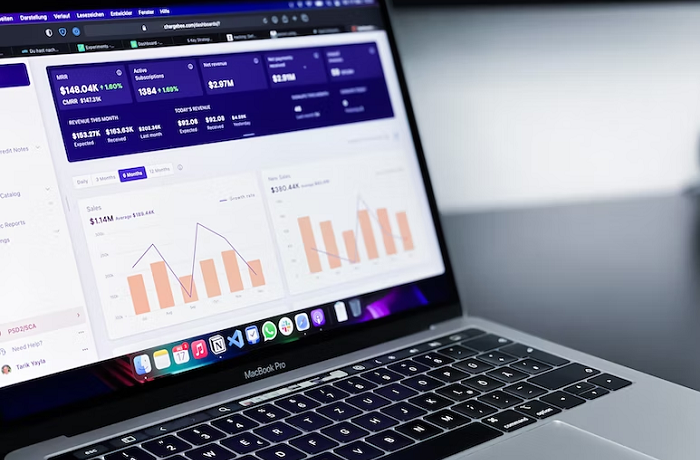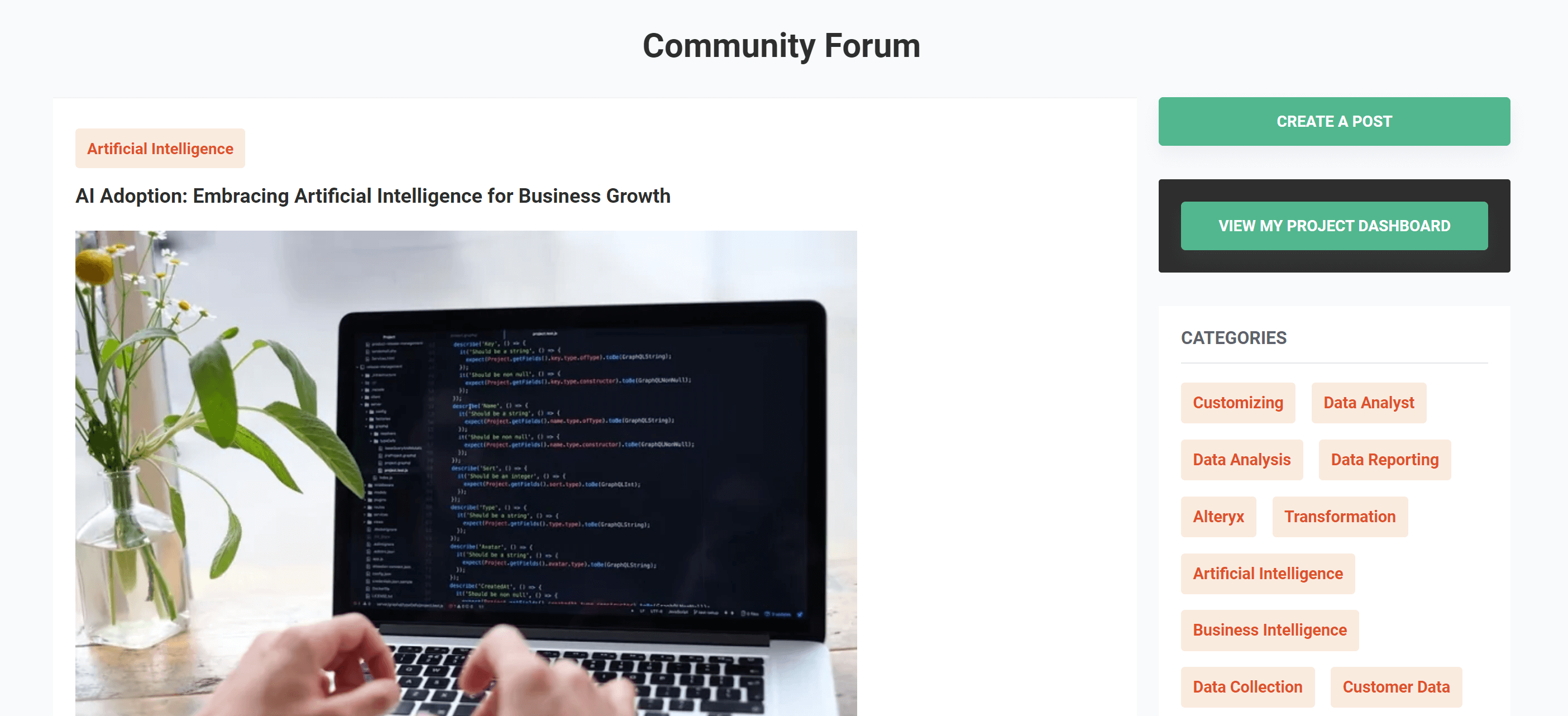How to Build Customer-Centric Data

Table of content
1. What is Customer-Centricity?
2. The Role of Data in Customer-Centricity
3. Steps to Build Customer-Centric Data
4. Benefits of Customer-Centricity
5. The Importance of Experts in Managing Customer-Centric Data
6. Conclusion
Customer-centricity has emerged as a critical priority for businesses aiming to thrive in a competitive marketplace. By placing customers at the heart of their strategy, companies can foster loyalty, drive growth, and create exceptional experiences. Achieving this requires thoroughly understanding customer behavior, preferences, and expectations elements that data analytics can unlock.
What is Customer-Centricity?
Customer-centricity is a business approach that places customers at the core of decision-making processes. This strategy tailors products, services, and marketing efforts to address individual needs and preferences, creating experiences that resonate deeply with customers.
“We all have opinions, we all have preferences. If the experience is not tailored to our preferences then we’re not interested.” – Jadd Elliot Dib
To implement a truly customer-centric approach, businesses need a 360-degree view of their audience—understanding their motivations, preferred interactions, and reasons for purchasing. This goes beyond surface-level demographics, delving into behavioral data, customer feedback, and engagement metrics.
The Role of Data in Customer-Centricity
Data analytics is essential for understanding customers and delivering personalized experiences. It enables businesses to collect, process, and utilize customer information effectively, driving strategies that are not only customer-focused but also impactful.
Key Roles of Data Analytics in Customer-Centricity
1. Customer Segmentation
Segmenting customers into groups based on shared characteristics such as demographics, online behavior, and purchase history helps businesses tailor their products and marketing strategies to meet the specific needs of each segment.
2. Personalization
Personalization is the foundation of customer-centricity. Using data analytics, businesses can gather insights into customer preferences and behaviors to create individualized product recommendations, marketing messages, and services.
3. Predictive Analytics
Predictive analytics uses historical data to anticipate future customer behavior, allowing businesses to proactively meet customer needs and expectations.
4. Customer Journey Mapping
Understanding the customer journey is essential for creating exceptional customer experiences. Data analytics enables businesses to map interactions across touchpoints, identifying areas for improvement and enhancing the overall customer experience.
5. Real-Time Insights
Real-time analytics helps businesses adapt quickly to changing customer needs, ensuring seamless and relevant interactions. For instance, e-commerce platforms can dynamically adjust recommendations based on a user’s browsing activity.
6. Customer Feedback Analysis
Customer feedback is a treasure trove of insights into customer satisfaction, preferences, and pain points. By leveraging data analytics, businesses can analyze feedback from surveys, reviews, and social media to enhance customer experience management, improve digital customer experience, and refine customer-centric marketing strategies.
Steps to Build Customer-Centric Data
1. Collect the Right Data
The foundation of customer-centricity lies in collecting the appropriate data. While businesses today have access to vast amounts of data, not all data is valuable for understanding customers. The key is to focus on relevant and actionable data that provides insights into customer preferences, behaviors, and expectations.
Sources of Data:
Online Interactions:
Data from websites, mobile apps, and social media platforms reveal how customers interact with a brand digitally. Metrics such as click-through rates, time spent on pages, and bounce rates provide insight into user intent and preferences.
Purchase History:
Transactional data offers a clear picture of what customers buy, how often they make purchases, and their spending patterns. This helps in identifying high-value customers and predicting future purchases.
Customer Feedback Forms:
Feedback is a goldmine of qualitative and quantitative data. Surveys, reviews, and NPS (Net Promoter Score) responses help capture customer sentiment and uncover pain points.
Moreover, businesses need to ensure compliance with data privacy regulations like GDPR or CCPA. Transparency in data collection builds trust with customers, as they are more likely to share valuable information when they feel their data is handled responsibly.
2. Focus on Quality Over Quantity
Rather than amassing vast amounts of data, businesses should emphasize collecting accurate, relevant, and timely information. High-quality data ensures reliable insights and eliminates the risk of basing decisions on misleading or outdated information. This can be achieved through regular data validation processes, where inconsistencies and duplicates are removed to maintain data integrity.
By focusing on quality, businesses can prioritize actionable insights over noise, leading to better decision-making. For example, knowing a customer’s most recent purchase is far more valuable than outdated records from years ago. High-quality data also facilitates more precise customer segmentation, enabling businesses to tailor their offerings to meet specific preferences effectively.
3. Data Enrichment for Deeper Insights
Data enrichment is the process of enhancing raw data by integrating additional details such as market trends, geographic information, and demographic profiles. This step provides a more holistic view of customer behavior, allowing businesses to predict future needs and personalize their marketing efforts. For instance, adding geographic data can help a retail business offer region-specific promotions while analyzing market trends can anticipate shifts in customer demands.
Enriched data enables predictive analytics, helping businesses stay ahead of the curve. By understanding external factors influencing customer decisions, companies can create more effective strategies. For example, a financial services company could use enriched data to identify which services resonate with different customer segments, driving both engagement and retention.
Benefits of Customer-Centricity
1. Improved Customer Retention and Loyalty
Customer-centricity fosters stronger relationships with customers by providing personalized and memorable experiences, leading to higher loyalty and retention rates.
2. Enhanced Customer Experience
Tailoring interactions to customer preferences elevates the overall customer experience, increasing satisfaction and advocacy. The importance of customer experience cannot be overstated—it’s the key to gaining a competitive edge.
3. Higher Marketing ROI
By focusing marketing efforts on well-defined customer segments, businesses can achieve better results with reduced costs, optimizing their customer-centric marketing strategies.
4. Competitive Advantage
Businesses that prioritize customer experience management and utilize data effectively are more agile, responsive, and capable of meeting customer needs compared to competitors.
5. Customer Retention and Engagement
Using data to proactively address issues and personalize offerings ensures customers remain engaged and satisfied.
The Importance of Experts in Managing Customer-Centric Data
Managing customer-centric data demands a high level of expertise in data collection, analysis, and application. Professionals who specialize in data analytics, such as freelance data analysts, are crucial in helping businesses uncover actionable insights and implement strategies to enhance customer experiences effectively. These experts bring a unique blend of technical proficiency and real-world experience to the table.
Why Hire Freelance Data Analysts?
Hiring freelance data analysts provides several advantages for businesses aiming to enhance their customer-centric strategies. Cost efficiency is a key benefit, as freelancers offer specialized services at a lower cost than maintaining a full-time in-house team, making them an affordable choice, especially for small businesses. Scalability is another advantage, allowing companies to hire freelancers on a project basis, paying only for the expertise they need when required.
Freelancers also bring specialized knowledge in areas like customer experience strategy, data enrichment, or predictive analytics, addressing specific business challenges. Platforms like Pangaeax connect businesses with skilled freelance data analysts, enabling them to manage customer-centric data effectively and affordably while delivering personalized experiences.
Conclusion
Customer-centricity is a powerful strategy that empowers businesses to understand, engage, and retain customers in meaningful ways. By leveraging data analytics to analyze customer feedback, enhance the digital customer experience, and refine customer-centric marketing strategies, companies can create personalized experiences that resonate with their audience.However, achieving this requires more than just data; it demands expertise, a commitment to quality, and an unwavering focus on customer satisfaction. By partnering with skilled professionals, businesses can harness the full potential of data to create exceptional experiences and gain a competitive edge. Platforms like Pangaeax enable businesses to connect with expert freelance data analysts, helping them manage customer-centric data effectively.
Get your data results fast and accelerate your business performance with the insights you need today.



